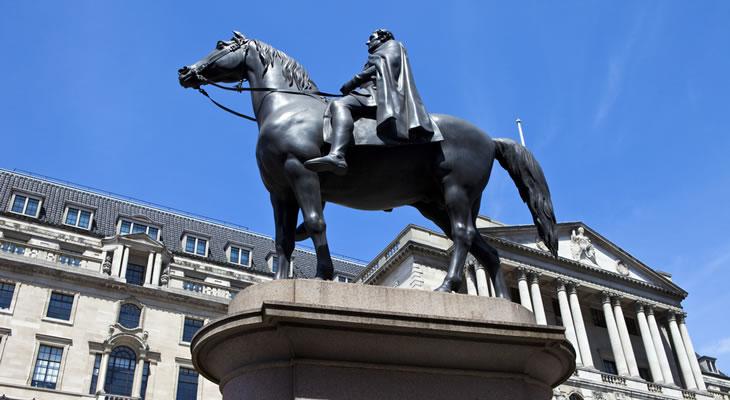The Pound Sterling to Canadian Dollar (GBP/CAD) exchange rate took a tumble in the latter half of Thursday’s trading as Canada’s export sector grew more than forecast.
The trade deficit widened only modestly to -$644 million in December from a positively revised -$335 million in November.
Despite a drop in energy prices, total exports managed to record a rise of 1.5%.
Royal Bank of Canada economist Josh Nye commented: ‘Although the trade deficit widened in the month, December’s increase in nominal exports is encouraging, with solid growth in non-energy exports significantly offsetting price-related declined in the energy component for the first time in several months.’
Earlier… The Pound Sterling to Canadian Dollar (GBP/CAD) exchange rate remained in a narrow range on Thursday after the ‘Loonie’ took a rather dramatic tumble on Wednesday.
The Canadian Ivey Purchasing Managers Index fell to a four-year low during Wednesday’s trading, from 55.4 to 42.6. Economists had forecast a much softer fall to 53.4. Any figure residing above the 50.0 benchmark denotes growth, whereas below shows contraction.
In addition, oil prices plunged by nearly 9% after a four-day rally, taking it back to $48 a barrel. The Canadian Dollar has fallen significantly against the US Dollar (CAD/USD) as softer oil prices weigh on the ‘Loonie’ exchange rate. The Canadian Dollar to US Dollar (CAD/USD) exchange rate is now residing below 80 US cents, at 0.7993.
Industry expert Camilla Sutton commented: ‘In January, the Canadian Dollar (CAD) was the worst-performing primary currency, losing 9% against the USD and marking the largest monthly losses since the height of the financial crisis. We are likely to see ongoing weakness in 2015, with a substantial year-over-year depreciation.’
Bank of England (BoE) Interest Rate Decision Could Influence Pound Sterling (GBP) Exchange Rate
Meanwhile, the Pound is trading tentatively ahead of the Bank of England’s (BoE) interest rate decision. The British currency is unlikely to react as majorly as it has in the past after January’s meeting minutes showed there was no longer a divergence of policymakers on the topic of rate hikes.
All members of the Monetary Policy Committee (MPC) voted to keep the current 0.50% benchmark in place—an event that saw the Pound Sterling exchange rate plummet after previous meetings had seen two policymakers vote for immediate increases.
However, some economists have suggested that the Bank of England may need to consider boosting its quantitative easing (QE) program if the UK gets caught in a slowdown.
Central banks the world over have began adopting additional monetary stimulus measures as the global economy falters.
Economist Shaun Richards stated: ‘Should we at some point see the UK economy slow down, then I think the Bank of England would come under quite a lot of pressure to ease policy. Now that might not come as an actual base-rate cut. We could see more QE or an expansion of the funding-for-lending scheme.’
Speculation as to when the BoE will hike rates has seen the Pound both gain and fall in recent months; however, any additional easing could see Sterling take a spectacular tumble.
Richards continued: ‘I do think now an easing of monetary policy is more likely than a tightening.’
Pound Sterling to Canadian Dollar (GBP/CAD) Exchange Rate Forecast
The Pound Sterling to Canadian Dollar (GBP/CAD) exchange rate could fluctuate on the release of Canada’s Net Change in Employment and Unemployment Rate ecostats on Friday. Unemployment in Canada is expected to remain at 6.7% in January—however any fall in joblessness could prop up the ‘Loonie’ to Pound Sterling (CAD/GBP) exchange rate.
Meanwhile, UK Trade Balance figures will also emerge and could offer moderate movement for the Pound.
The Pound Sterling to Canadian Dollar (GBP/CAD) exchange rate resides at 1.9093. The Canadian Dollar to Pound Sterling (CAD/GBP) exchange rate is trending in the region of 0.5244.

